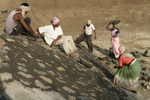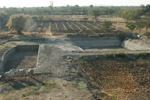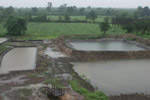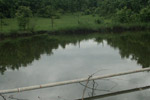Water is a key ingredient for life and development especially for the development of an economy which is predominantly agrarian in nature as in India. Increases in the demand for water and development pressures have changed the characteristics of the water courses in India. Erosion of the land due to poor land management practices and increased development has resulted in increased siltation of rivers and alterations to stream hydraulics. Due to the increase in demand groundwater reserves are becoming more and more depleted and the surface water sources are becoming too polluted for human use or fall victim to runoff into rivers and smaller drainage systems. Most of the cultivable areas of Nagpur District are dependent on the monsoon rains. The district has a high water runoff rate and the water bodies are disappearing at a fast pace due to siltation. The erosion of the top soil is resulting in low productivity of the land.
To address some of these problems and educate the farmers on the importance of soil and moisture conservation practices the Sangam has developed a model demonstration farm at its Base Centre in Bamhani. At the model farm the Sangam presents easily feasible Water Management techniques including the farm ponds, bunds, ridges and gully plugs. Thanks to these techniques farmers are given an alternative to the unsustainable use of bore wells for irrigation. Throughout the villages there are many wells, often 100 metres deep, which are the main source of water. The construction of deep-bore wells started in the 1960s and unfortunately continues today. This is being done without taking into consideration the long term consequences of depleting the aquifers (= natural water storage), which cannot be refilled simply during a monsoon season which takes hundreds, if not thousands of years in the natural course of things. Now the time has come to abandon or at least reduce the dependability on the well-system in the villages. The Sangam’s Watershed Project is the first step in transforming the way in which villages acquire water. The Sangam's model farm has also introduced drip irrigation, which saves 80 % of the water that is used in the traditional techniques of irrigation.
Thus our Water Management project is serving as a model for similar future projects. Saving water not only relies on making a successful watershed scheme to ensure that runoff from the monsoon rains is limited and the rain soaks into the ground but it also involves informing and teaching the villagers, who are not easily persuaded, about the necessity of building watershed schemes and taking action to conserve the existing supply of ground water.
The latest step in development of the Model Farm has been in the installation of a drip irrigation system. One of the main benefits of utilising drip irrigation is in that some 60 percent less water is utilised than conventional irrigation and so for the first time all the model farms fields can be cultivated during the dry season, without the usual concerns of water scarcity in the summer months. Additionally the amount of work required to keep the crop weed free is greatly reduced and with the installation of the irrigation pipes the water as well as a liquid fertiliser can be precisely and easily released directly to the roots of each plant. In addition through providing independence from the rain fall, the drip irrigation system makes the planting out of young seedlings possible without the need to rely on the increasingly unreliable monsoon season.
Organic Farming
Agriculture in India has been strongly influenced by the Green Revolution in the 1970's. Due to the increased use of hybrid seeds and cash crops, such as Cotton and Soybean, minerals have been leached from the soil. Simultaneously, the Green Revolution increased the use of pesticides and artificial fertilizers and since many farmers lack the knowledge on the use of artificial fertilizers, the wrong use can cause tremendous loss of soil fertility. The rising prices of fertilizers and dependency on hybrid seeds are furthermore threatening the financial stability of the farmers. The hybrid seeds are less resistant to weather changes than traditional seeds and unlike the traditional seeds cannot be re-sown for the following crop. Each season therefore the farmers are forced to take out expensive loans to purchase the new hybrid seeds, which might well be destroyed by the unpredictable rainfall.
The Sangam's Model Farm has recently shifted to organic farming in order to promote sustainable and eco-friendly agriculture in the region while helping to improve the livelihoods of farmers. Instead of hybrid seeds the Sangam's Model Farm uses traditional seeds and produces its own organic fertilizers (a mixture of cow dung, urine, leaves, seeds, Gud and Jawar) in order to avoid the need to purchase artificial fertilizers. With the help of the local agricultural experts the Sangam are aiming to educating the local farmers not only in Water Management but also in the different techniques of organic farming.
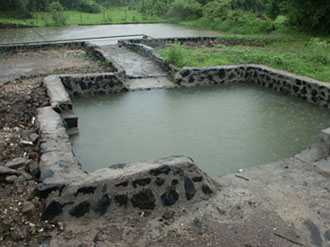 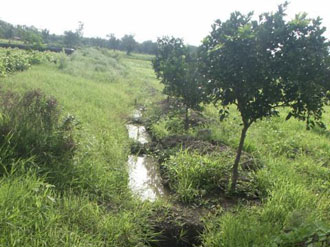
|

